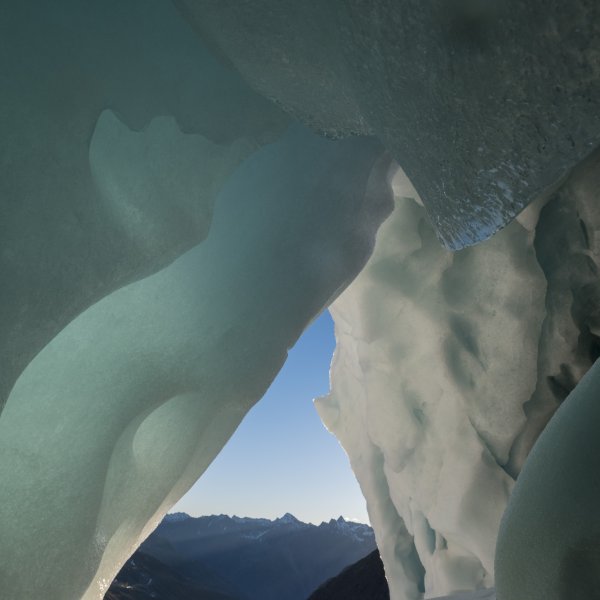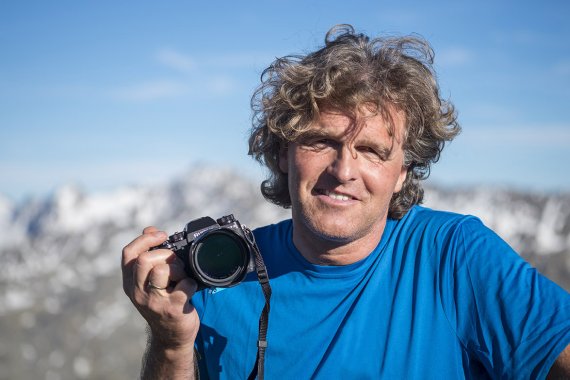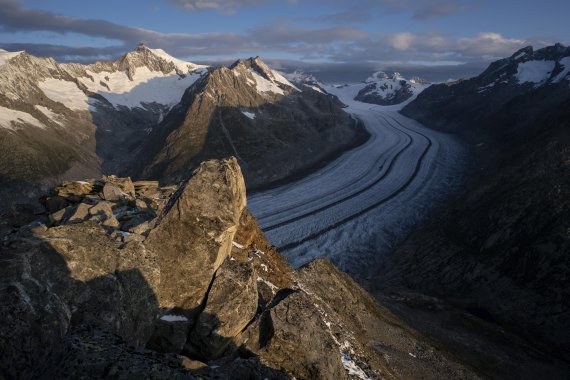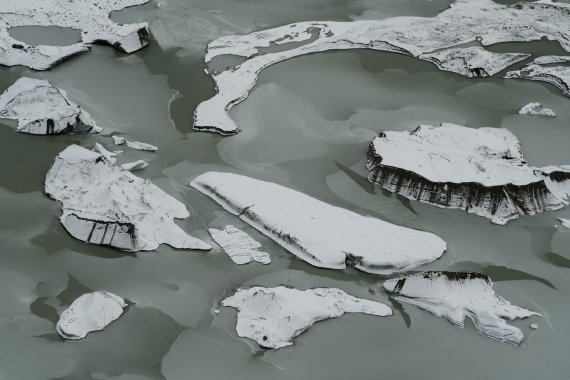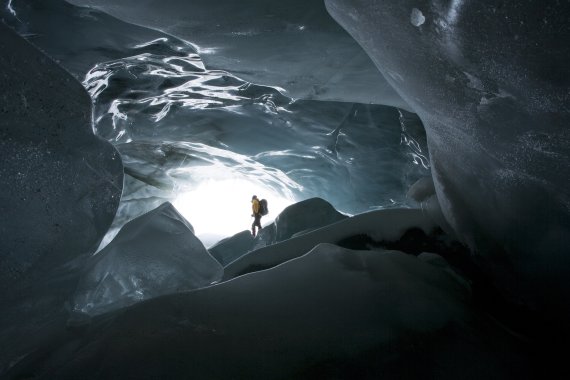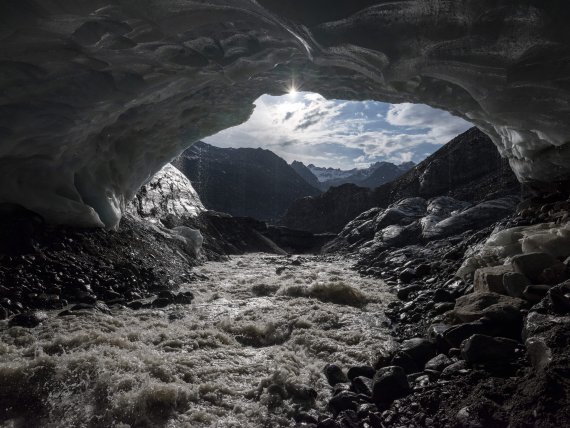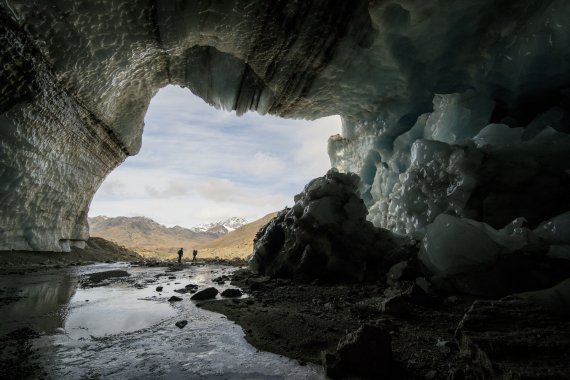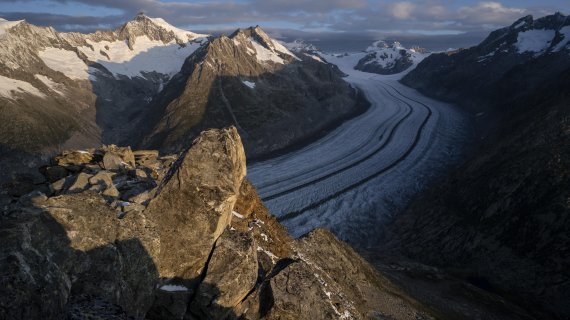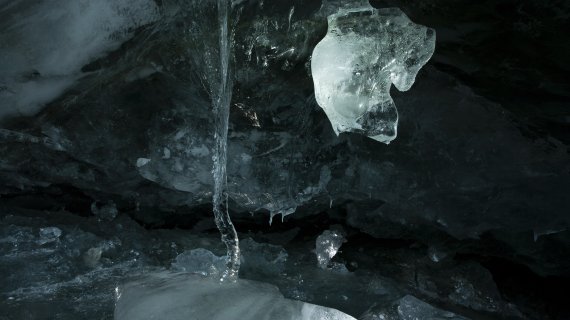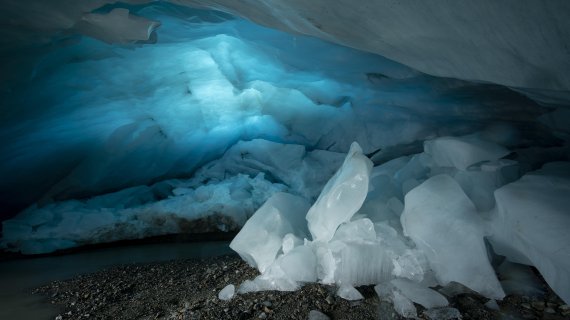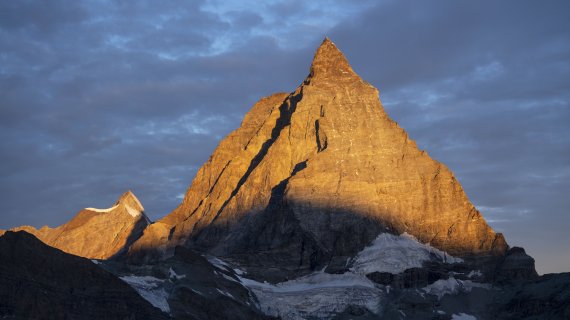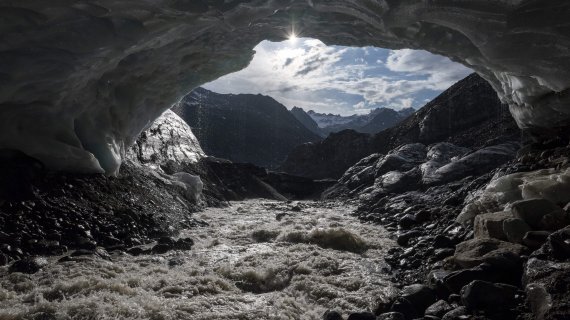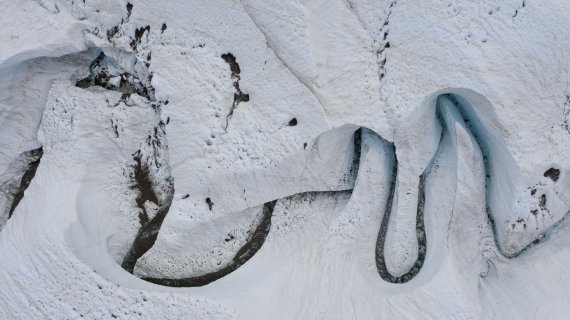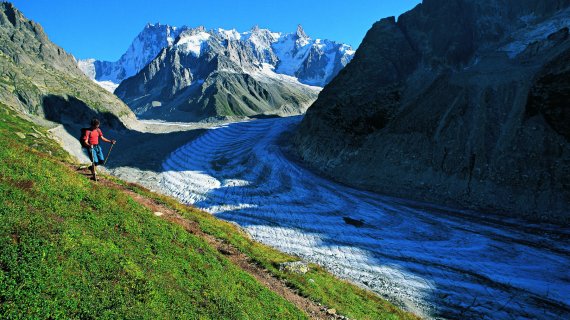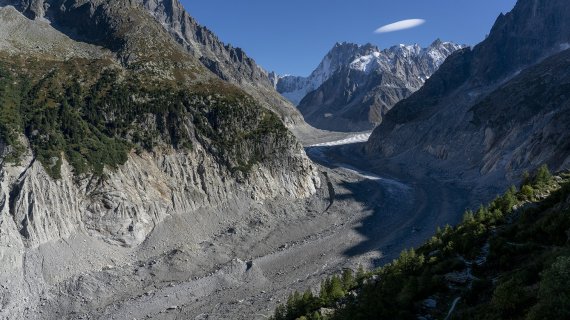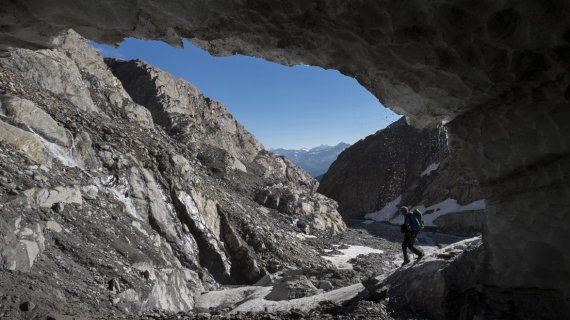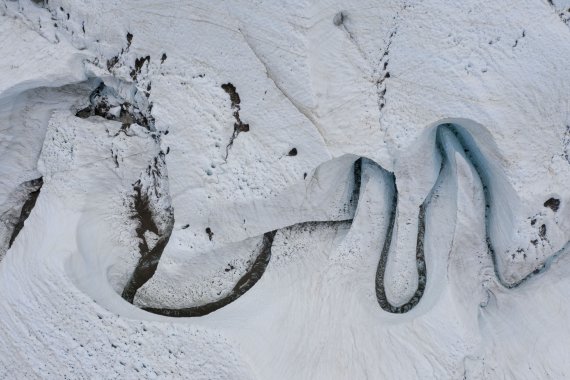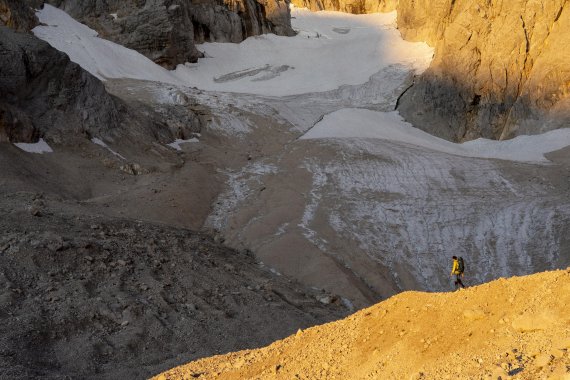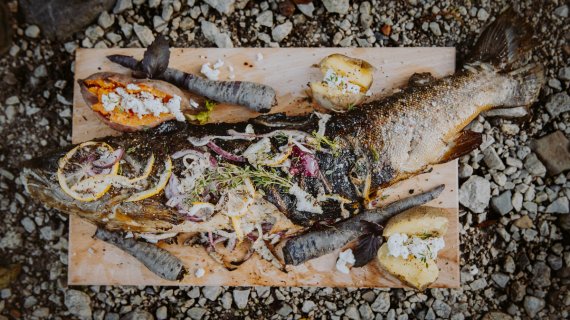The summer visit to the Gepatschferner glacier gate confirmed what Ritschel had already suspected in advance: "the gate was significantly larger, as more meltwater flows out in July/August. On peak days in midsummer at temperatures around 35°C, water masses of more than 10 cubic meters flow out there - per second."
Another thing he noticed was that the glacier tongue looked grey and dirty. There was just more and more debris, rubble, and rock flowing off with it. "It was different in my memories, too". Nevertheless, he was totally focused on filming and photographing and it was "just fun to dive so intensively into this mountain landscape."
